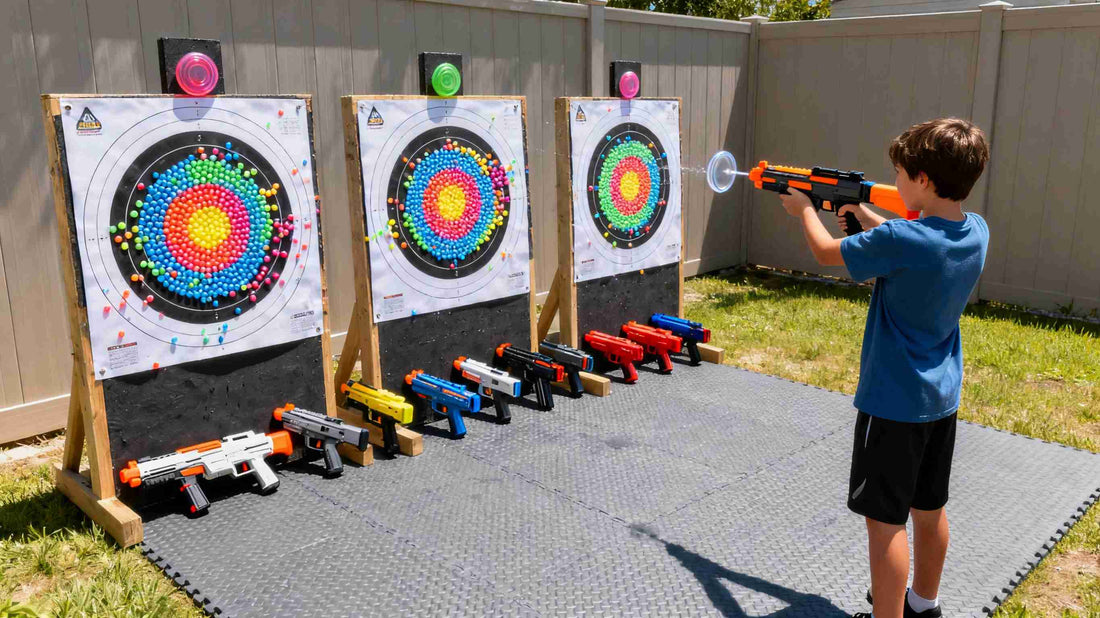
How long will water beads last?
Share
Water beads—those squishy, color-changing spheres that expand in water—have become a staple in sensory play, gardening, and DIY decor. But one question pops up repeatedly for anyone who uses them: How long will water beads last? The answer isn’t one-size-fits-all; their lifespan depends on a mix of factors, including the type of beads (branded like Orbeez vs. generic), how they’re used, stored, and even the environment they’re in. This blog breaks down the science behind water bead longevity, compares lifespans across different scenarios, and shares tips to make your beads last as long as possible.
1. The Core Factors That Determine Water Bead Lifespan
Before diving into specific numbers, it’s critical to understand the key variables that shape how long water beads hold up. These factors work together to either extend their usability or shorten it:
-
Material Quality: The type of superabsorbent polymer (SAP) used is the biggest driver. High-grade SAP (like in Orbeez) is more durable and resistant to breakdown, while low-grade SAP (in generic beads) cracks or disintegrates faster.
-
Usage Scenario: Beads left soaking in water 24/7 will degrade faster than those dried and stored between uses. Similarly, beads mixed into garden soil have a different lifespan than those used for sensory bins.
-
Storage Conditions: Dry beads stored in airtight containers last far longer than those exposed to humidity, which causes them to clump or prematurely expand.
-
Environmental Factors: Heat, direct sunlight, and chemicals (like soap or fertilizer) break down SAP molecules, reducing lifespan. Cool, dark, and clean conditions are ideal.
Key Takeaway: Not all water beads age the same way. A high-quality Orbeez bead stored properly can last years, while a generic bead used in a hot garden might only last months.
2. Lifespan Breakdown: Orbeez vs. Generic Water Beads
The biggest divide in water bead longevity is between branded Orbeez (made with pharmaceutical-grade SAP) and generic water beads (lower-grade SAP). Here’s how they compare across common use cases:
A. When Fully Hydrated (In Water)
When beads are submerged in water (e.g., for sensory play or decoration), their lifespan is limited by bacterial growth and SAP breakdown:
-
1–2 weeks Orbeez: Maintain their shape, texture, and color with regular water changes (every 2–3 days). The pharmaceutical-grade SAP resists mold and bacterial growth better than generic beads. After 2 weeks, they may start to lose elasticity or develop a slightly cloudy appearance.
-
3–7 days. Generic Water Beads: Typically last in water. Low-grade SAP is more porous, making it prone to mold (visible as white fuzz) or color bleeding. Even with water changes, they often become brittle or mushy within a week.
B. When Dry (Stored)
Drying water beads properly lets you reuse them and extends their overall lifespan dramatically:
-
2–3 years. Orbeez: When dried completely (spread on a tray in a cool, dry area for 2–3 days until they shrink back to their original 2–3mm size), they can be stored in an airtight container. They’ll rehydrate to their full size and texture with no loss of quality, even after multiple dry-wet cycles.
-
6–12 months. Generic Water Beads: Dry storage lifespan is at best. Low-grade SAP tends to absorb ambient moisture, causing beads to clump together or partially expand in storage. When rehydrated, they may crack, fade, or fail to expand uniformly after 1–2 cycles.
C. In Repeated Use (Dry-Wet Cycles)
Many users reuse water beads by drying them between play sessions—here’s how many cycles each type handles:
-
10–15 dry-wet cycles. Orbeez: With proper drying and storage, they can withstand. After that, you may notice slight fading or reduced elasticity, but they’ll still be usable for non-play purposes (e.g., gardening).
-
2–3 cycles. Generic Water Beads: Most break down after . The SAP becomes brittle, and beads may crumble into small pieces when squeezed or rehydrated—posing a choking hazard for kids or pets.
3. How Usage Scenarios Impact Lifespan
Water beads behave differently depending on how you use them. Here’s how lifespan varies across common applications:
A. Sensory Play (Kids/Adults)
For sensory bins or playsets (e.g., Orbeez Soothing Spa), beads are kept hydrated during use. To maximize lifespan:
-
Change water every 2–3 days to prevent mold.
-
Remove any beads that crack or discolor immediately.
-
Dry beads completely after 1 week of play to avoid degradation.
With this care, Orbeez can last 4–6 weeks of on-and-off play; generic beads may only last 1–2 weeks.
B. Gardening & Plant Care
Water beads are often mixed into soil to retain moisture for potted plants. In this scenario, lifespan depends on soil conditions:
-
6–12 months Orbeez: When mixed into well-draining soil, they slowly release water and break down over time. The high-quality SAP decomposes into harmless polymers that don’t harm plants.
-
3–6 months Generic Water Beads: Degrade faster in soil, typically. However, some low-grade beads may release trace chemicals as they break down, so they’re not recommended for edible plants.
C. Decorative Use (Vases/Centerpieces)
For vase fillers or table centerpieces, beads are kept in clear water for aesthetic appeal. Lifespan here is shorter due to constant hydration and potential sunlight exposure:
-
1–2 weeks Orbeez: Last in decorative displays. Keep them out of direct sunlight to prevent fading.
-
3–5 days. Generic Water Beads: Fade or mold in, making them a short-term decor option at best.
4. 5 Tips to Extend Water Bead Lifespan
With the right care, you can get more mileage out of your water beads—whether they’re Orbeez or generic:
-
Use Distilled or Filtered Water: Tap water with high chlorine or mineral content breaks down SAP faster. Distilled water keeps beads cleaner and more durable.
-
Dry Thoroughly Before Storage: Spread beads in a single layer on a paper towel or tray. Avoid direct heat (e.g., radiators) — air-drying in a cool, dark spot works best. Store dried beads in an airtight container with a desiccant packet to absorb moisture.
-
Avoid Extreme Temperatures: Don’t leave hydrated beads in freezing conditions (they’ll crack) or direct sunlight (they’ll fade and shrink). Ideal temperature range: 15–25°C (59–77°F).
-
Clean Beads Gently: If beads get dusty or dirty, rinse them with cool water—never scrub, as this damages the SAP surface.
-
Separate Damaged Beads Promptly: Remove any beads that are cracked, discolored, or moldy immediately. One bad bead can contaminate an entire batch.
5. When to Discard Water Beads: Signs It’s Time to Toss
Even with perfect care, water beads won’t last forever. Here are clear signs to discard them:
-
Mold or Mildew: Visible white, green, or black fuzz, or a musty smell—this is a health hazard, especially for kids.
-
Brittleness or Crumbling: Beads break into small pieces when squeezed (choking hazard).
-
Color Bleeding or Fading: Dye leaks into water, or beads lose their vibrant hue (affects decor and can stain surfaces).
-
Slimy Texture: Hydrated beads feel sticky or slippery instead of smooth—signals bacterial growth.
6. Common Myths About Water Bead Lifespan
Let’s debunk two widespread misconceptions:
Myth 1: “Water beads can last indefinitely if dried.”
False. Even Orbeez degrade over time—their SAP slowly breaks down from exposure to air and moisture, reducing their ability to rehydrate uniformly after 2–3 years of storage.
Myth 2: “Adding vinegar to water makes beads last longer.”
False. Vinegar’s acidity can damage the SAP structure, causing beads to shrink or become brittle. Stick to regular water changes instead.
Conclusion: Lifespan Starts with Choice & Care
Water bead lifespan isn’t random—it’s shaped by the beads you choose and how you treat them. Orbeez, with their pharmaceutical-grade SAP, outlast generic beads by 2–3x in most scenarios, making them a better value for play or repeated use. Generic beads work for short-term, non-play purposes (like one-time decor or gardening) but aren’t worth the risk for kids’ play.
By understanding how material quality, usage, and storage impact longevity—and following simple care tips—you can enjoy your water beads longer while keeping them safe. Whether you’re filling a sensory bin for your child or adding moisture to your potted plants, knowing “how long water beads last” helps you plan better and avoid waste.
